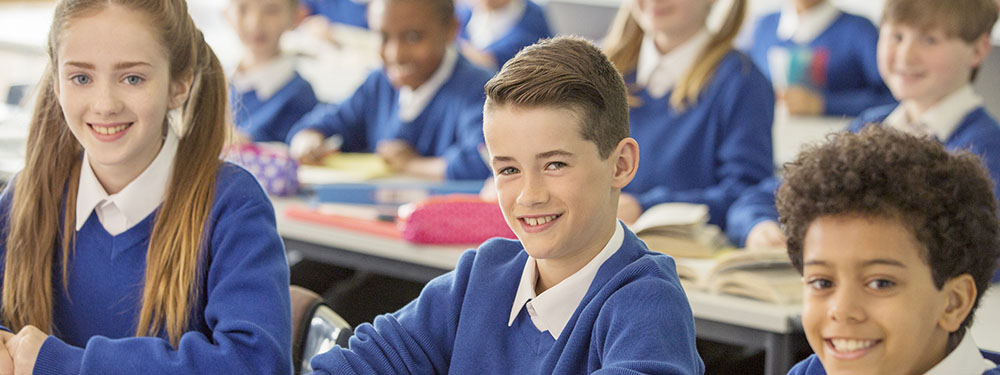
Based on interviews with Jack Gallagher, Richard Challoner School and Anna Dwyer, St John the Baptist School.
Many schools in the network feel that transition into year 7 has become a bigger issue in recent years. Obviously this has partly been driven by the pandemic – the need to address gaps in learning and support pupils presenting with mental health issues has become more pressing. However, for the team at St John the Baptist School, this was a longer term issue. They had seen a marked increase in the number of pupils joining the school not only with SEND but with a wide variety of needs. Anna Dwyer from St John the Baptist observed that these needs did not always present themselves fully in year 7, but became evident as pupils moved through school and lacked the skills needed to cope as academic demands increased.
Feeling that they needed a different approach, they looked to see how other schools were addressing this issue. Meeting the needs of all learners is a long-standing strength at Richard Challoner School, where a high number of students have ECHPs and diagnoses of different kinds. The team at Richard Challoner have a well-established transition department and were able to share useful experience, which informed decisions at St John the Baptist.
Both schools now offer carefully designed transition classes, which provide a manageable start for those students who might struggle with the move to secondary school. Both have two transition classes in year 7 and careful thought is given to the make-up of each group – ensuring that there is the right balance of challenge and nurture. Pupils are taught for the majority of their subjects by a primary specialist, which reduces the potential difficulties they might face in adjusting to lots of new teachers and enables that member of staff to gain a really good understanding of their learning needs. Jack explains how students often maintain their connections with transition teachers long after they have finished being part of the class.
Students study English, maths, history and geography within their transition class and receive targeted literacy and numeracy support. At the same time, students continue to attend some subjects with the rest of their year group, accessing specialist teachers and gaining some experience of moving around the site. Both Jack and Anna stress the importance of ensuring that students in transition are not isolated from others.
Both Anna and Jack are keen to emphasise that this is not a regular SEN group. As Anna puts it, “this was a curriculum decision, not an SEN one.” While those students who struggle academically are supported in transition classes, there is a wide range of ability. Students might be selected to join transition classes because they have had a disrupted key stage 2, because they have mental health issues or suffer from anxiety or just because they don’t quite seem ready to tackle the full jump to secondary school.
At Richard Challoner, where transition classes have been running for quite some time, students have gone on from transition to study A-levels and even to achieve Oxbridge places.
Nor is this about curriculum narrowing. As Anna explained, they “wanted to bring children up to ensure that they can access the full curriculum rather than having to simplify provision.” Great care has been taken by both schools to ensure that early intervention to support literacy levels doesn’t limit students’ choices – for example in both schools students in transition are able to study a modern language. Whilst in transition class, students study the same curriculum as everyone else, ensuring that they aren’t being left behind whilst they are receiving additional support.
Both Richard Challoner School and St John the Baptist run transition classes in years 7 and 8, but the number of pupils in transition is far fewer by year 8. Students transition to mainstream classes – at St John the Baptist, this happens mid-year when appropriate. Whilst some students will inevitably require longer term support, some make very rapid progress. As both Anna and Jack explain, this approach is all about responding flexibly to the needs of learners.
Anna sees their work around transition as a logical development of their focus on the science behind learning. By reducing the cognitive load relating to the pressure of adapting to new school structures, teachers’ names and approaches, homework etc, students have more capacity for learning. Both schools have found that the attendance of pupils in transition classes is excellent and behaviour has similarly improved. Students feel more positive about school as they feel safe and experience success.
Both Anna and Jack explain that their key focus is finding the best journey for each individual young person. Jack stresses that their work is about inclusion not exclusion: “some of the students would not be here without transition.” As Anna puts it “we have five years with each child – we have to make the best use of that time for every individual; we have to find the best route through”.
This blog was taken from the Spring 2023 edition of the Journal, a publication exclusively for SSAT members providing thought-provoking articles, valuable insights and practical tips to navigate an ever-changing educational landscape.
